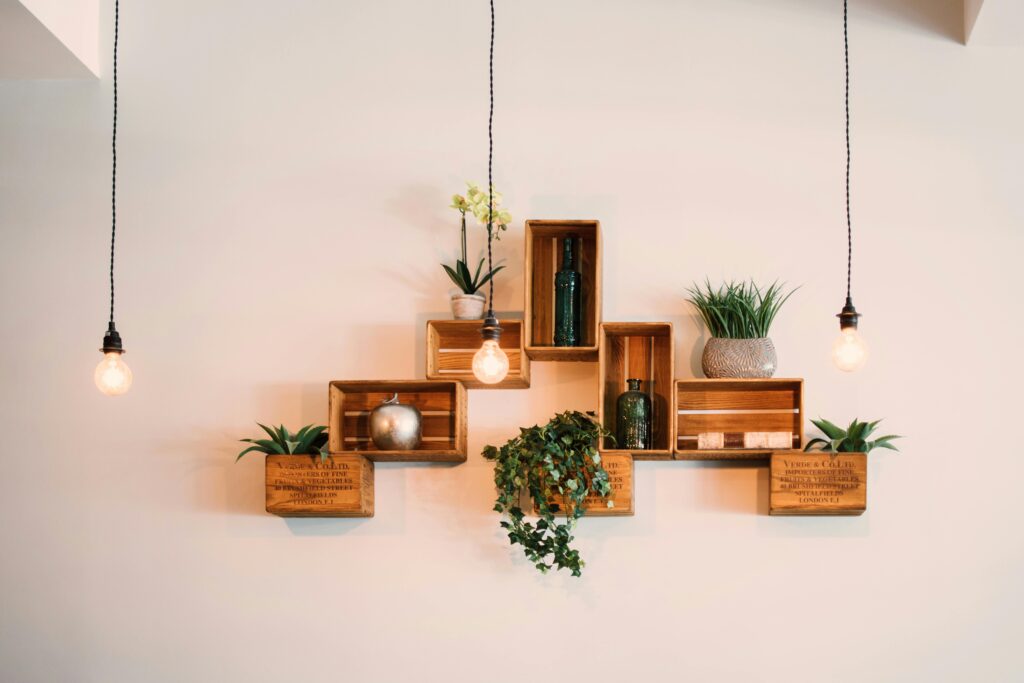Lighting is a crucial component of any living room design. It not only illuminates your space but also sets the mood, accentuates interior design, and makes the room more functional and welcoming. Whether you’re renovating or simply looking to enhance your current space, here are essential lighting tips to consider for any living room.
Contents
Understand the Layers of Lighting
Effective lighting involves layering different types of light sources throughout your room. There are three main types of lighting to consider:
1. Ambient Lighting: This is the main source of light in your room, usually provided by ceiling fixtures, recessed lighting, or large floor lamps. Ambient lighting should evenly illuminate your space, making it safe and comfortable to navigate.
2. Task Lighting: As the name suggests, task lighting is used to perform specific tasks. This could be a reading lamp by a cozy chair or table lamps that light up a dark corner, making it easier to see finer details when reading, writing, or working on hobbies.
3. Accent Lighting: Accent lighting is used to highlight architectural features or important elements within your living room, such as artwork, sculptures, or an interesting wall texture. Spotlights, wall-mounted fixtures, or track lighting are commonly used for this purpose.
Choosing the Right Fixtures
The fixtures you choose can dramatically affect the room’s aesthetic and the efficacy of the light provided. Here’s how to select the best fixtures for each type of lighting:
– Ceiling Fixtures: Chandeliers or modern pendants are popular choices for ambient lighting that also serve as a focal point. Choose a design that complements your living room’s style.
– Floor and Table Lamps: Ideal for task lighting, these lamps should be chosen based on their functionality and how well they match with the overall decor. Adjustable lamps are excellent for tasks because you can direct the light exactly where you need it.
– Wall Sconces and Track Lighting: These are perfect for accent lighting. Sconces add a soft glow and can create a warm ambiance, while track lighting is more focused and better for highlighting decorative pieces.
Consider the Bulb
The type of bulb you use is just as important as the fixture. Different bulbs can affect the energy efficiency, color temperature, and even the mood of your living room.
– LED Bulbs: These are highly energy-efficient and have a longer lifespan than most other bulbs. They come in various colors and brightness levels, making them suitable for all three lighting types.
– Halogen Bulbs: These provide a crisp, white light, which is great for task lighting where clarity and detail are important.
– Incandescent Bulbs: Known for their warm, inviting glow, incandescent bulbs are a good choice for ambient lighting where a cozy atmosphere is desired.
Maximize Natural Light
Don’t underestimate the power of natural light. It can make your living room feel larger and more open. Here are a few tips to enhance the natural light in your living room:
– Use Mirrors: Placing mirrors opposite windows can help bounce light around the room, effectively increasing the amount of natural light.
– Choose the Right Window Treatments: Light-colored and translucent window treatments can help diffuse light, ensuring the room is well-lit without the harsh glare of direct sunlight.
– Keep Windows Clean: It might seem simple, but keeping your windows clean can help maximize the amount of light that enters the room.
Implement Smart Lighting Solutions
Smart lighting technology allows you to control the ambiance of your living room with ease. Here’s how you can use smart lighting effectively:
– Dimmers: Installing dimmers instead of traditional switches can help you control the intensity of light in your living room, allowing you to change the atmosphere based on the time of day or the activity you are doing.
– Smart Bulbs: These can be controlled via apps on your smartphone or tablet, and can change color and brightness. They’re perfect for adjusting your living room environment without needing to change fixtures.
– Timers and Sensors: Use timers or motion sensors to ensure lights are only on when needed, helping to save energy and reduce your utility bills.
Get Creative with Placement
Finally, the placement of lighting can influence how the room feels and functions. Here are a few placement tips:
– Spread Out Light Sources: Distribute light sources around the room to avoid shadows and dark spots. This can include a mix of overhead, mid-level, and ground-level lighting.
– Use Light to Create Zones: You can use lighting to define different areas in your living room, such as a reading nook, a spot for watching TV, or a display area for art.
– Highlight Textures and Colors: Use directed light to enhance the textures and colors of your furniture and decor, adding depth and interest to your space.
Effective lighting transforms a living room from a simple area in your home to a dynamic space where aesthetics and functionality blend seamlessly. By understanding the different types of lighting, choosing the right fixtures and bulbs, maximizing natural light, implementing smart lighting solutions, and creatively placing light sources, you can create a living room that’s not only well-lit but also inviting and adaptable to your everyday needs. Remember, the best-lit rooms are those that can change with the occasion, time of day, and the mood you wish to create.

